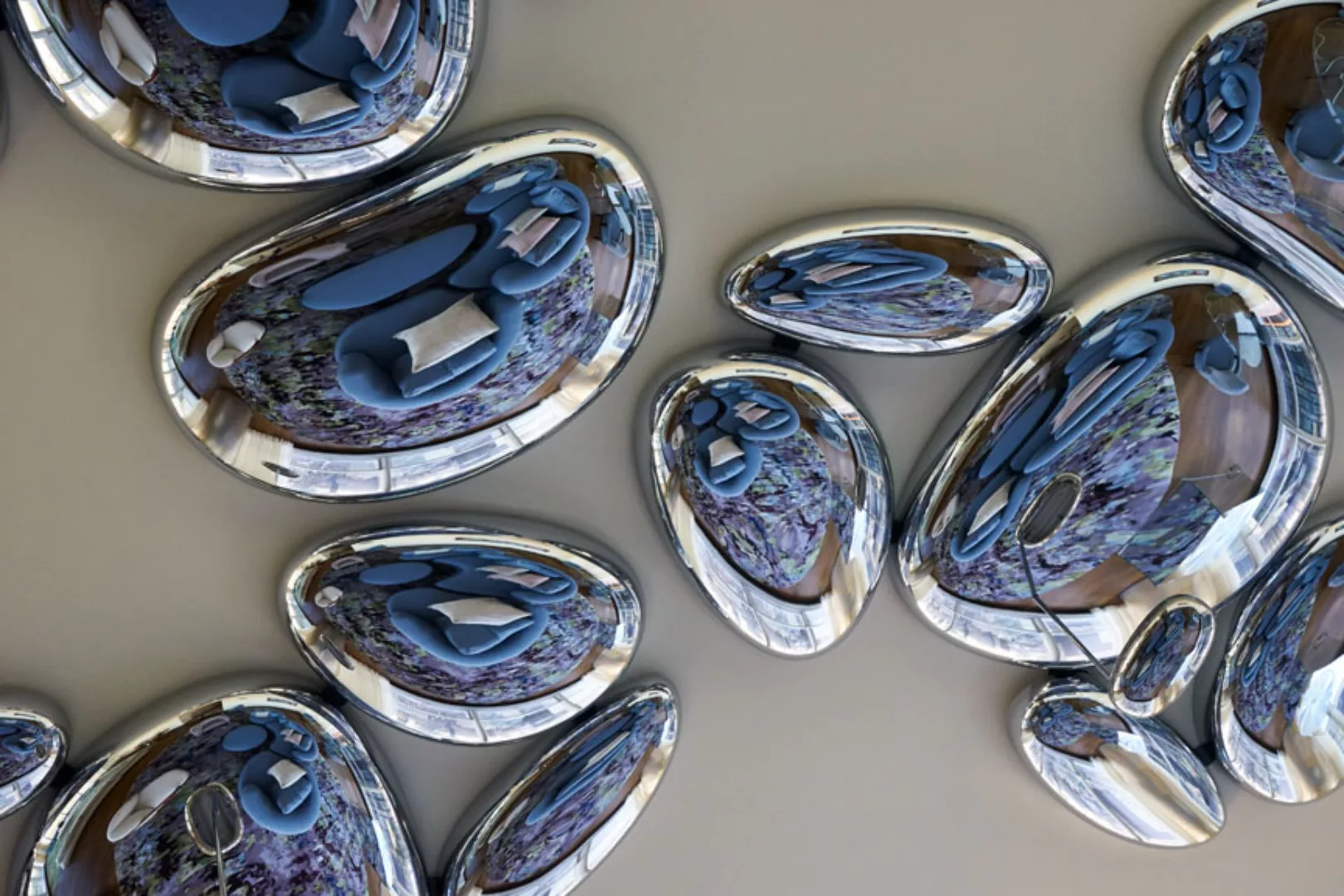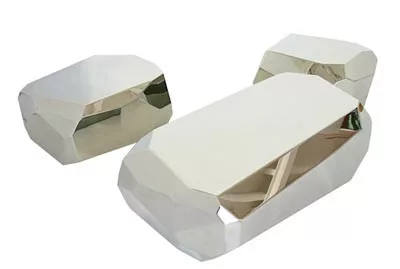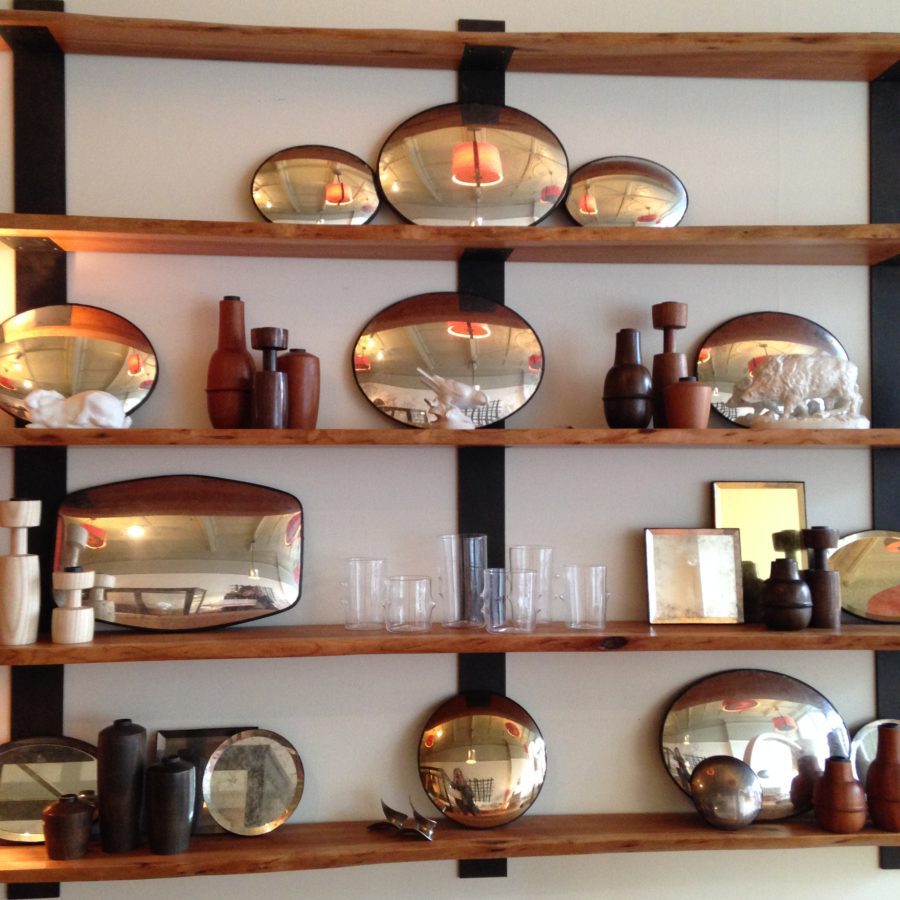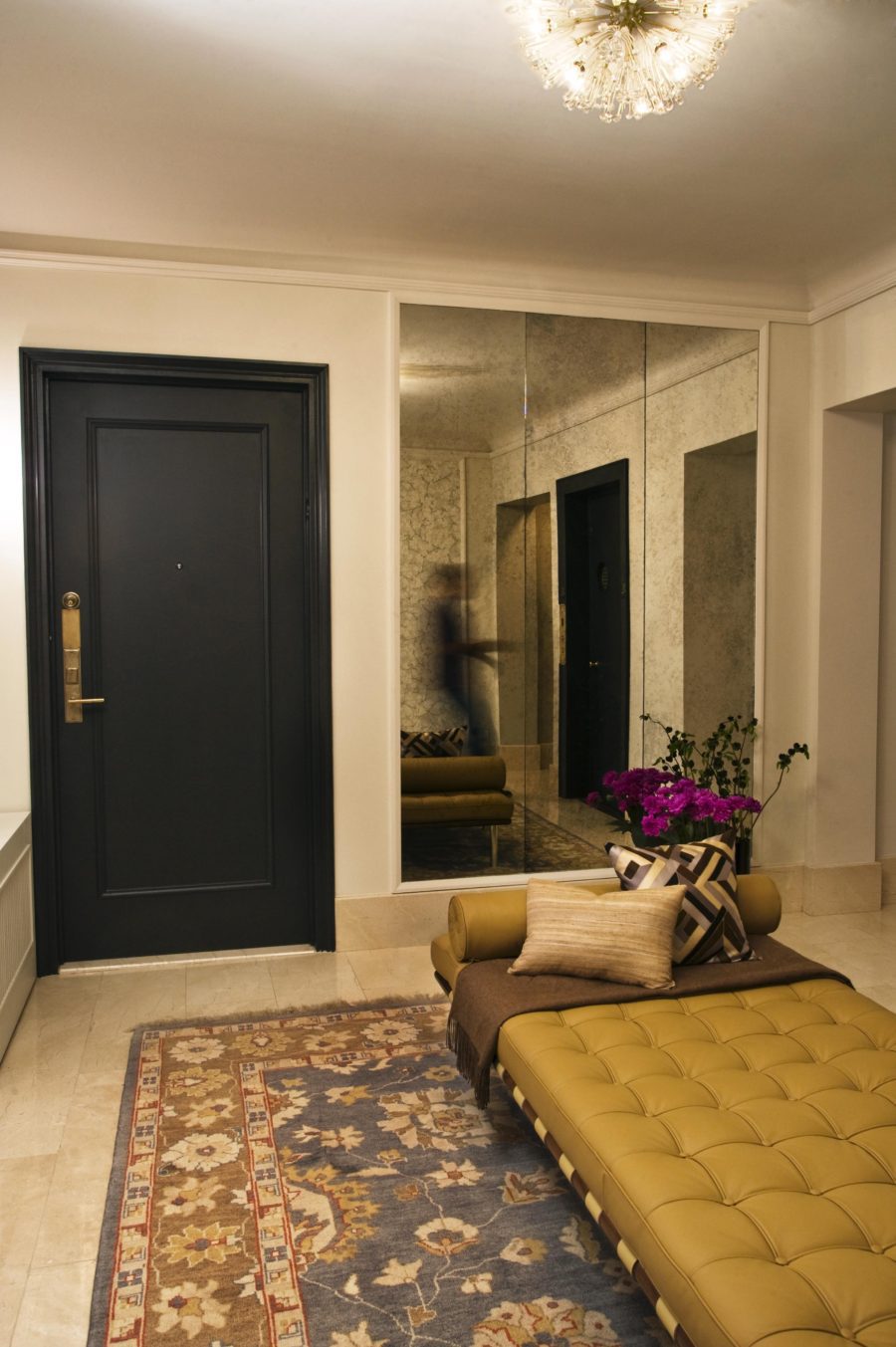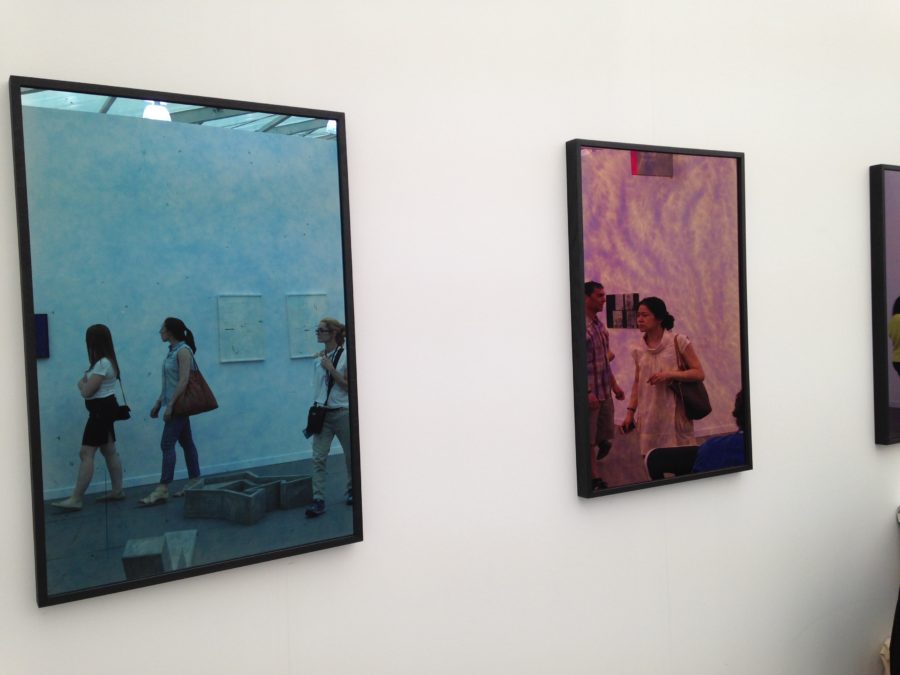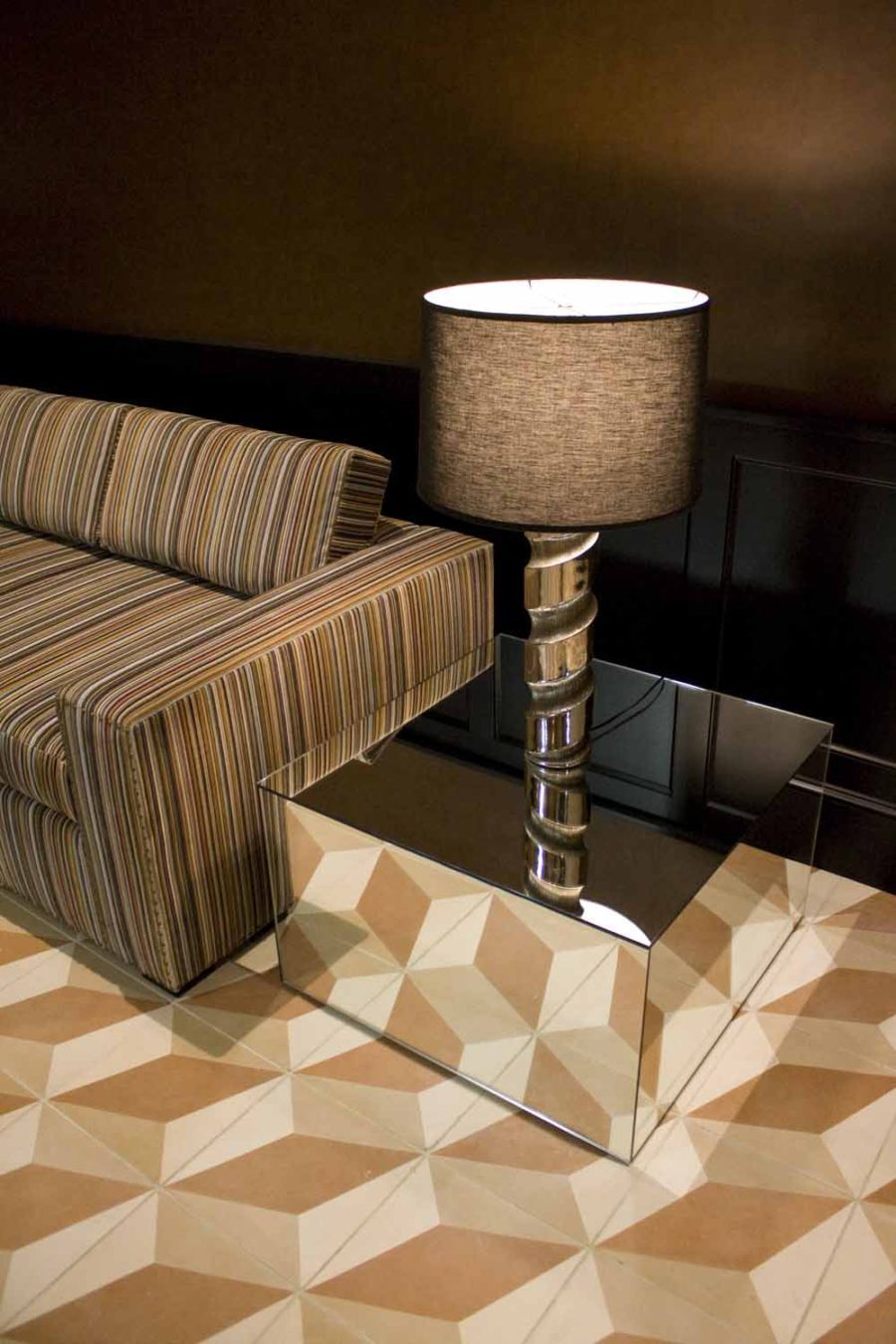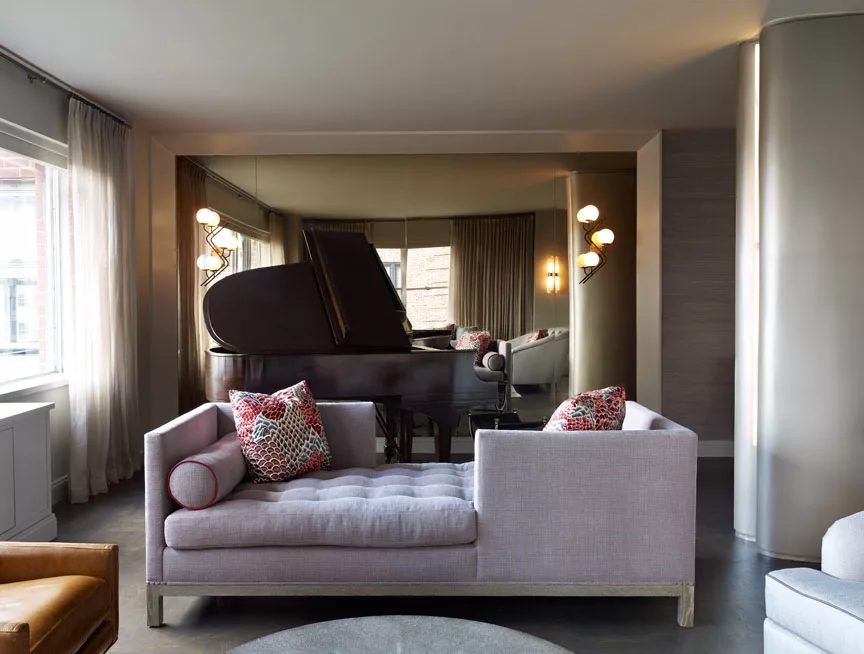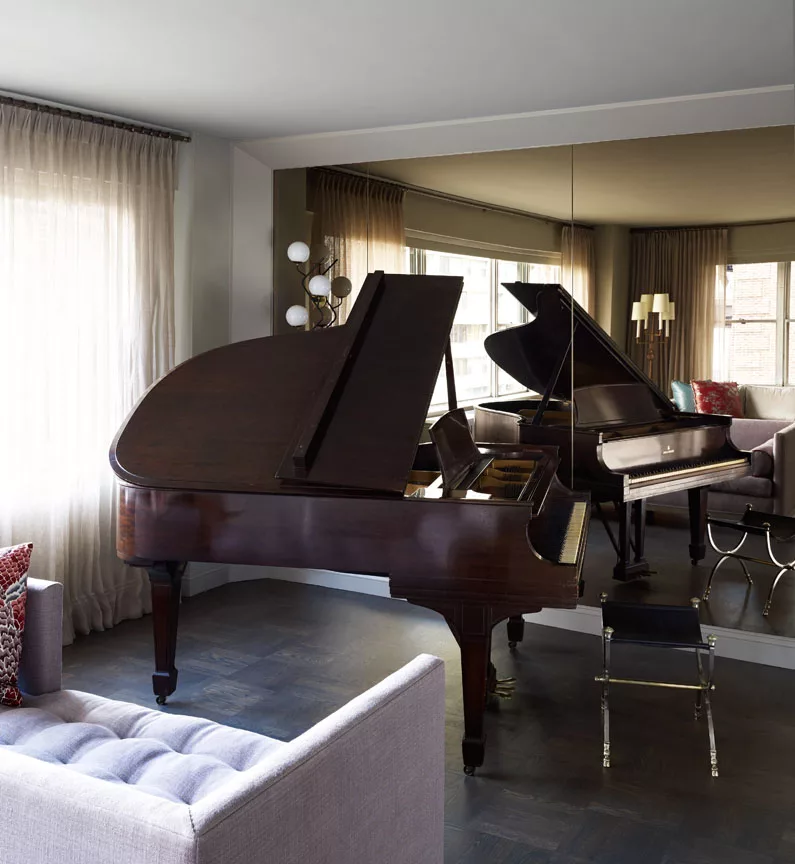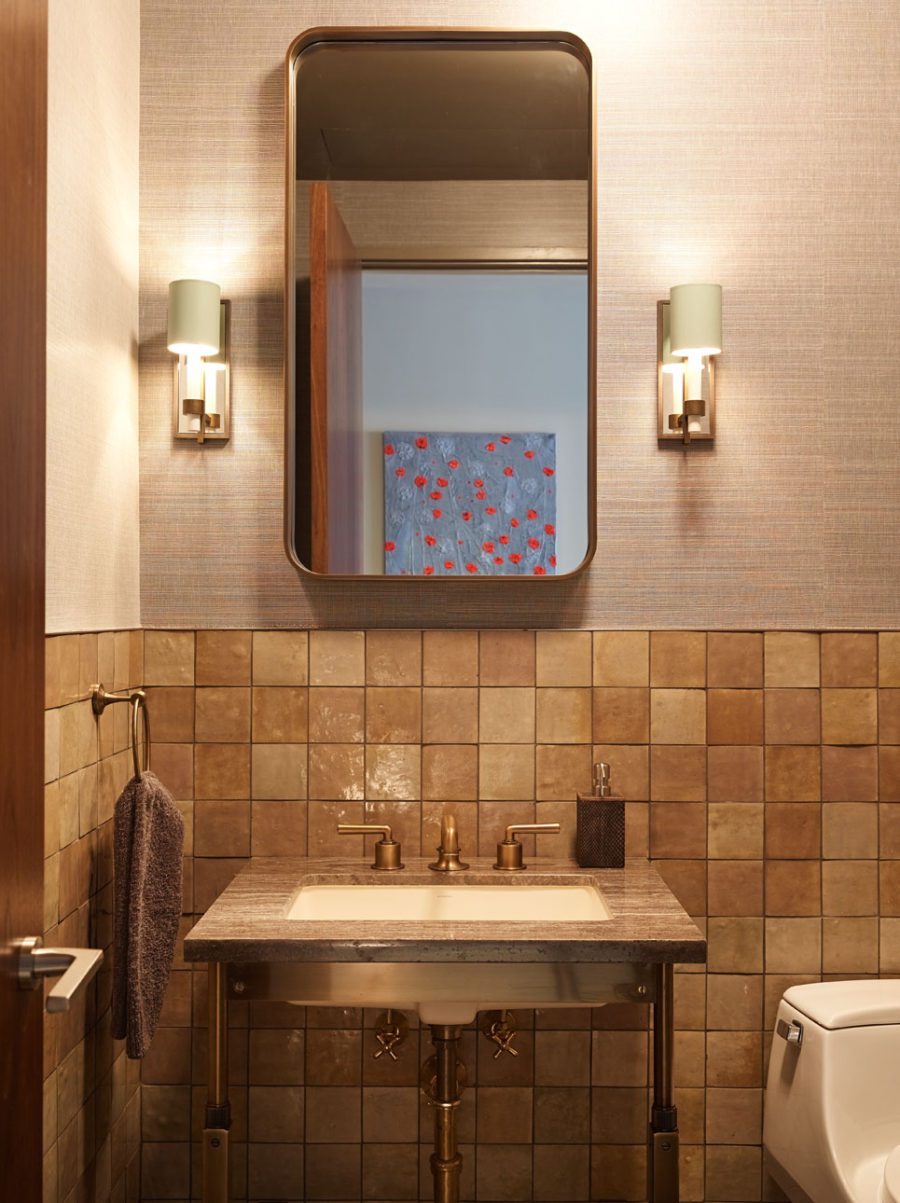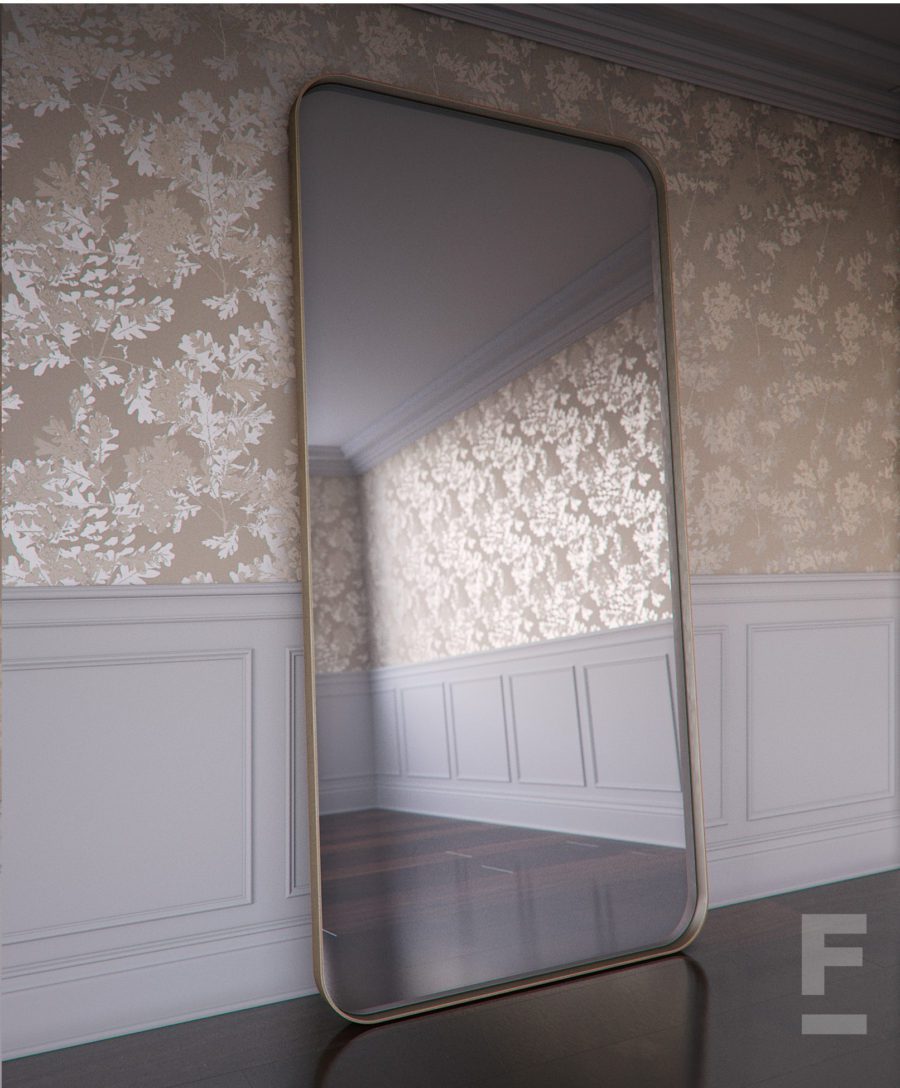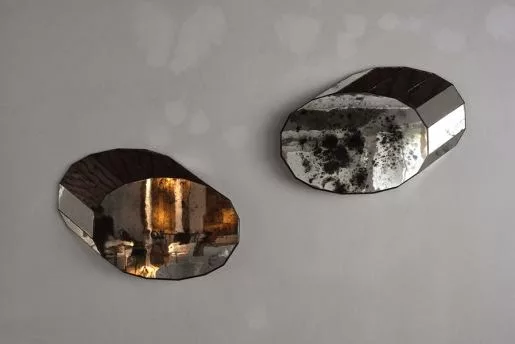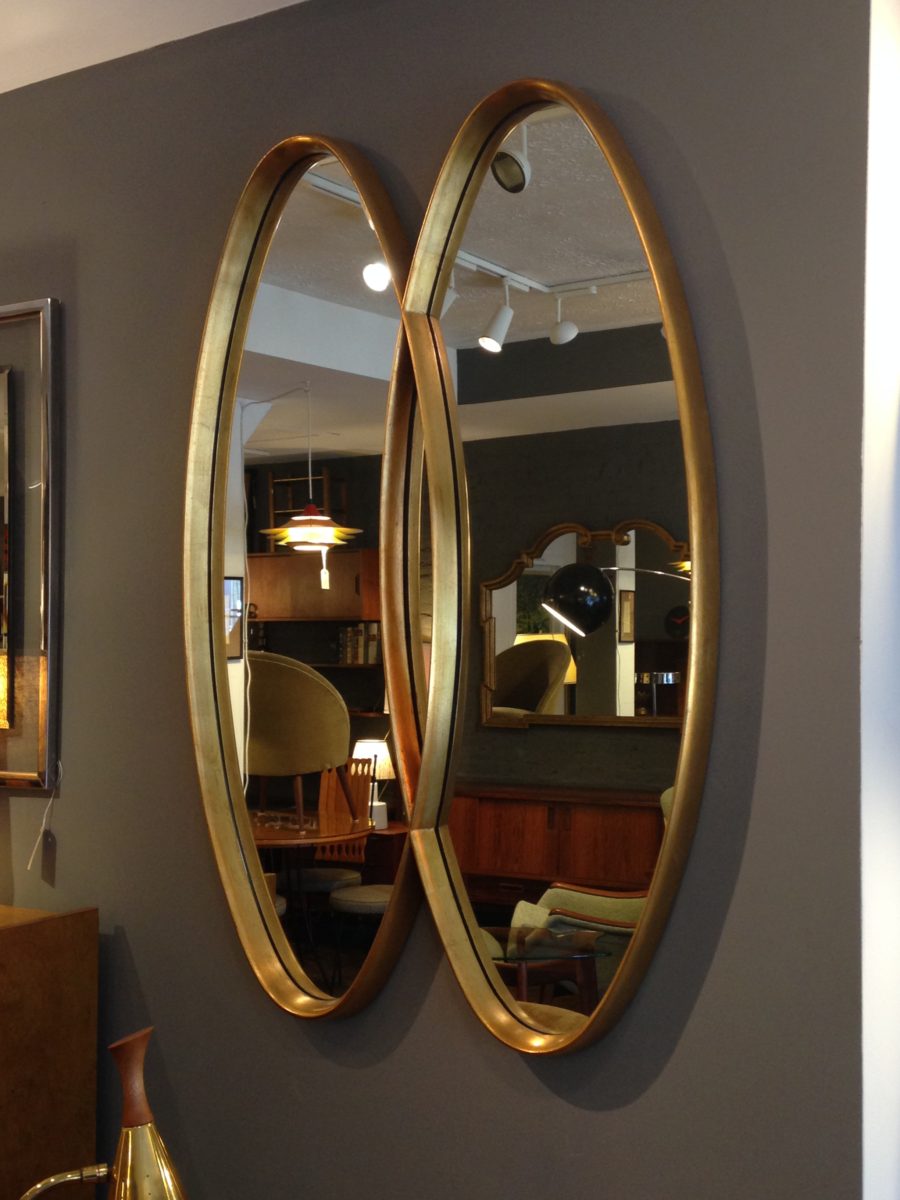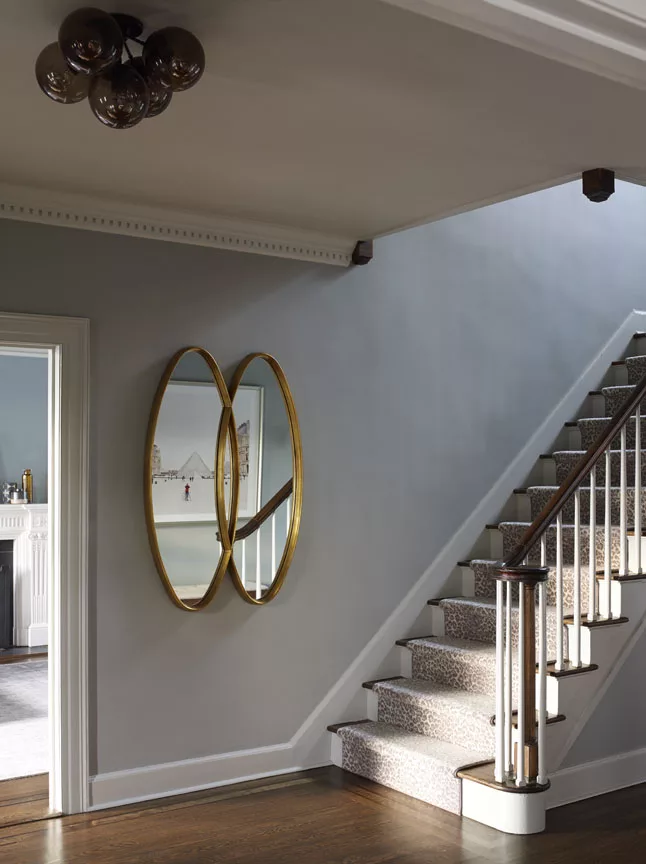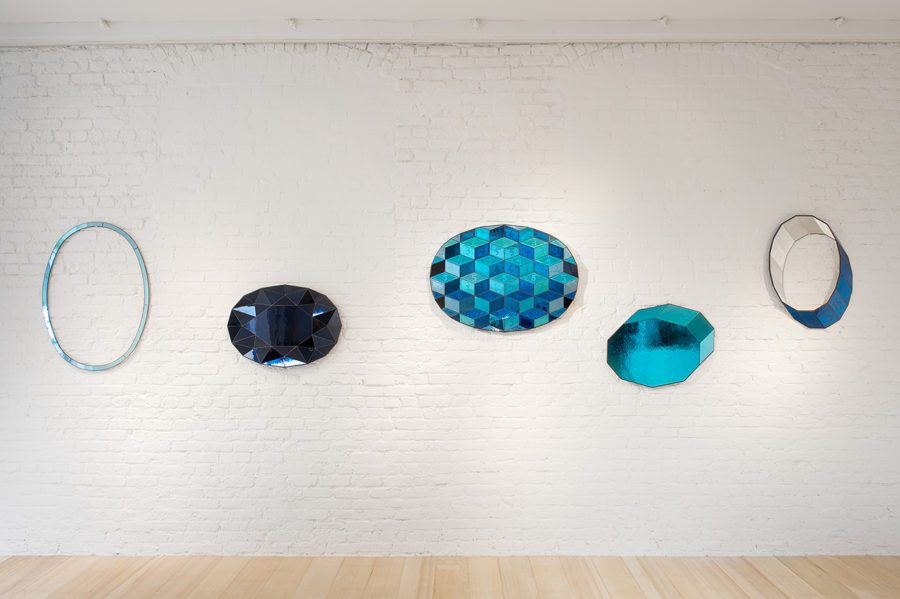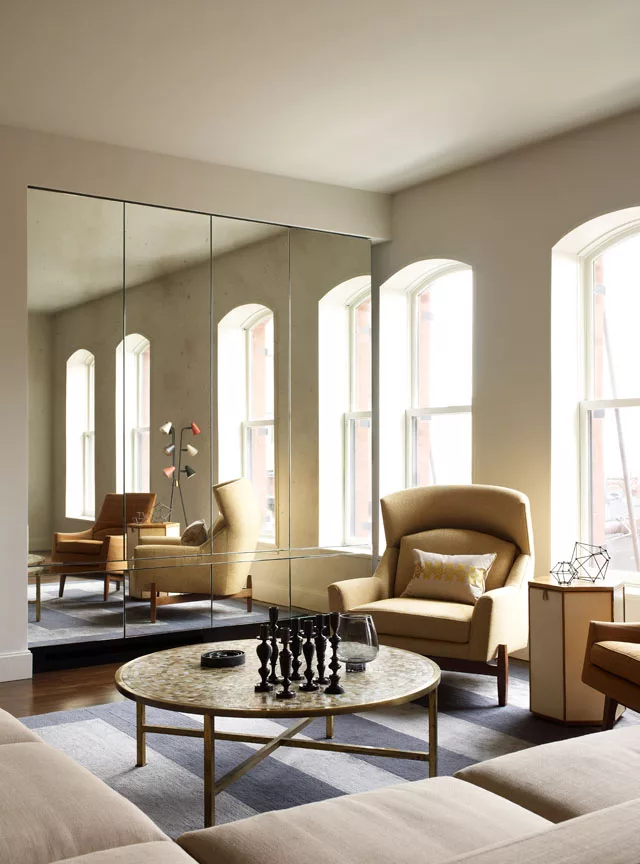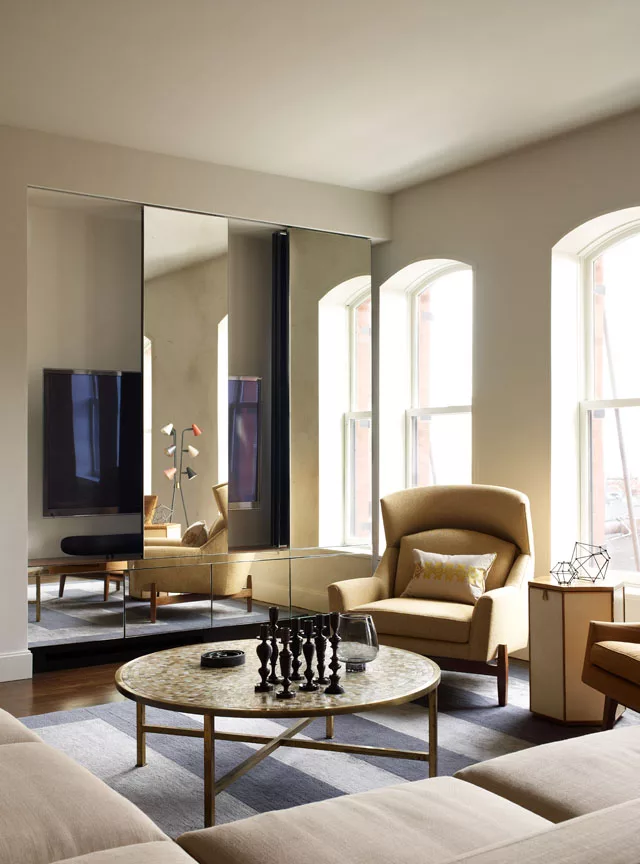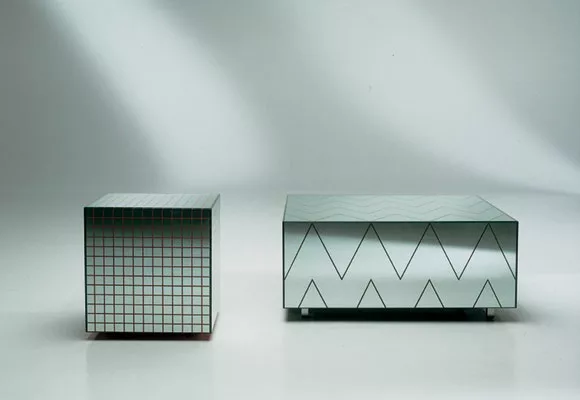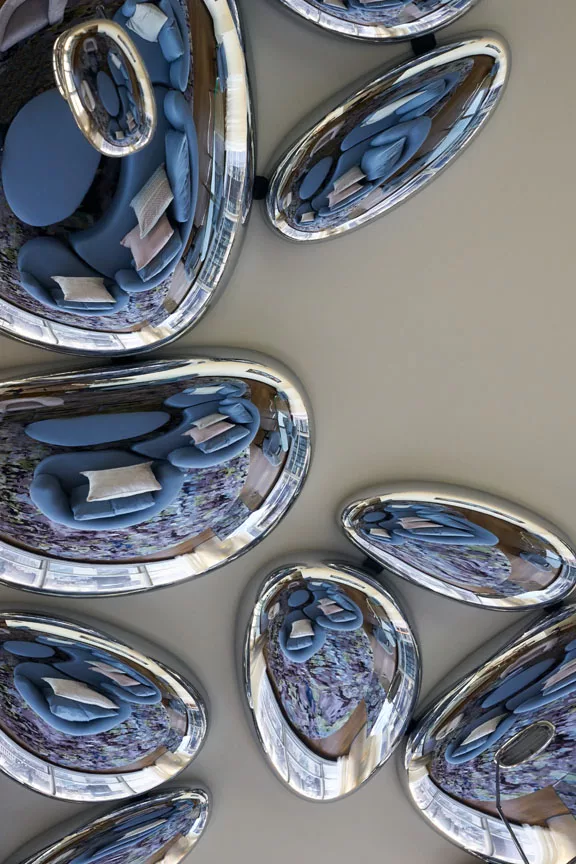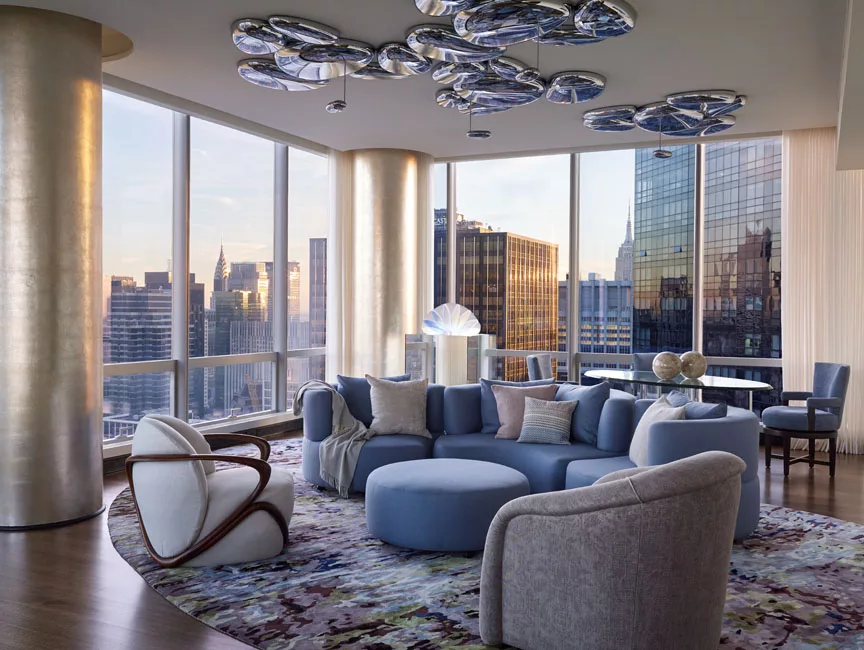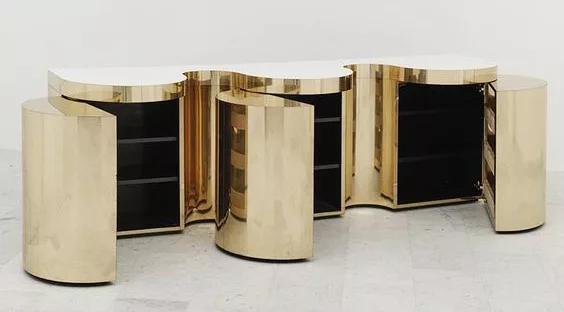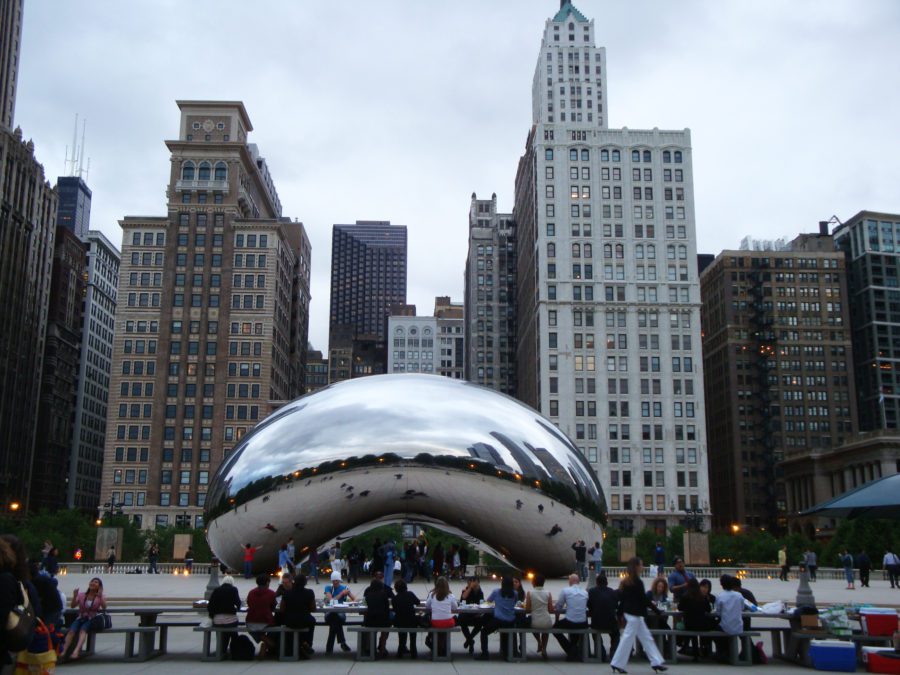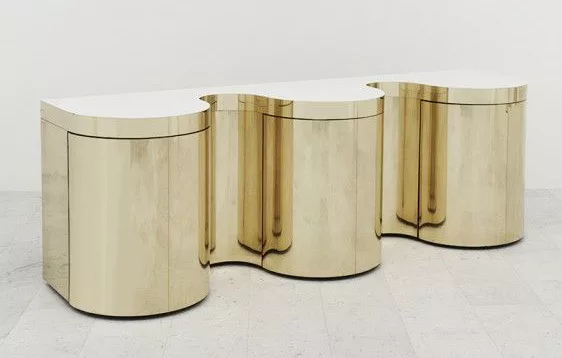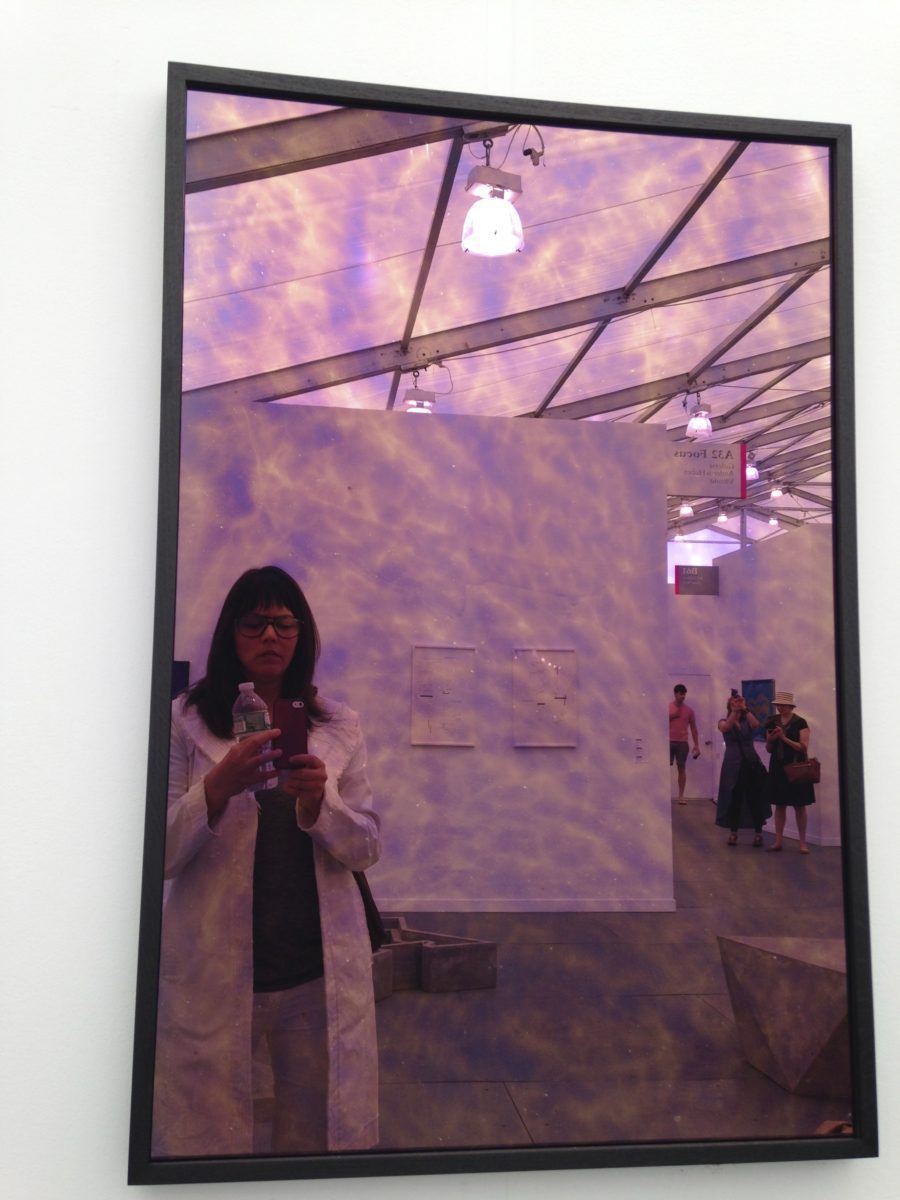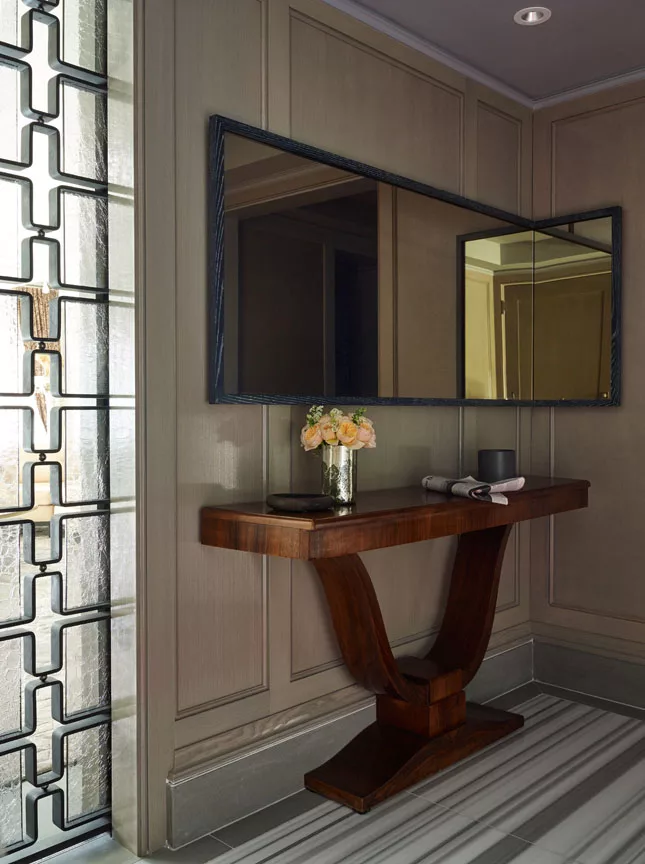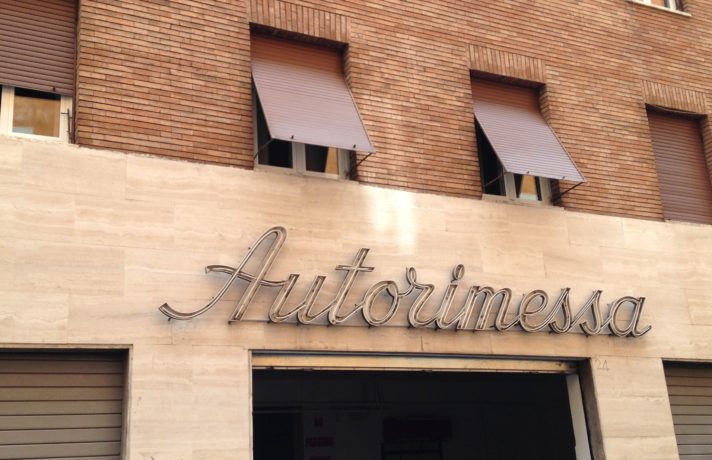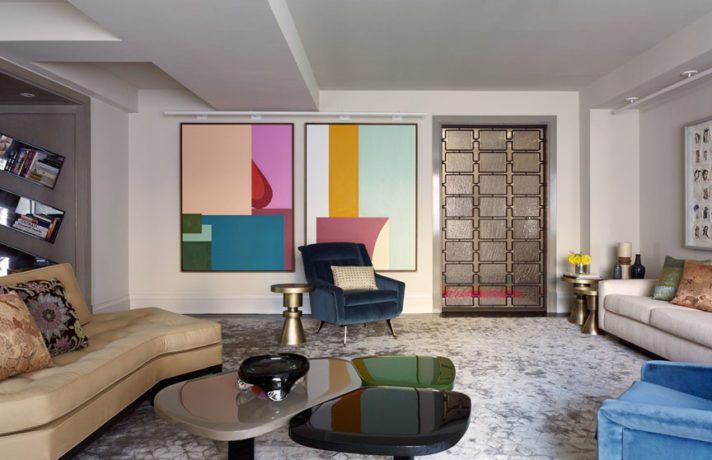Mirrors have defined and expanded the spaces of just about every era. A mirrored or reflective surface adds exponential depth, movement and light to a space. Classically this material technique has been used to elongate a room, placed decoratively above a fireplace, used to flank an architectural symmetry or to catch a small peak of light. In restaurants, angled mirrors are placed above tables so guests can sneak glimpses of their neighbor’s dishes, an appetizing strategy with a voyeuristic appeal.
We now have the technological privilege of creating reflections on all types of surfaces, adding tints, hazes, glazes, etching, curving, casting and molding. With this freedom we are invited to fulfill the mirror’s potential, to decide when an expansive surface calls for a floor to ceiling reflection, when the base of a monolithic table wants to disappear into the floor, or when a corner wants to evaporate into a space.
